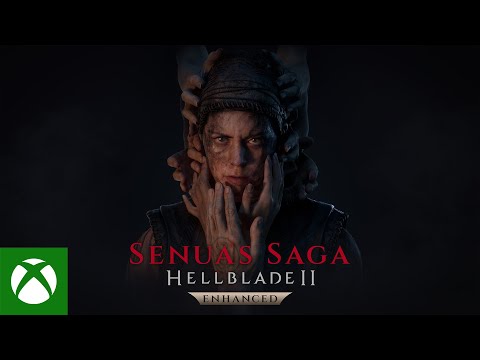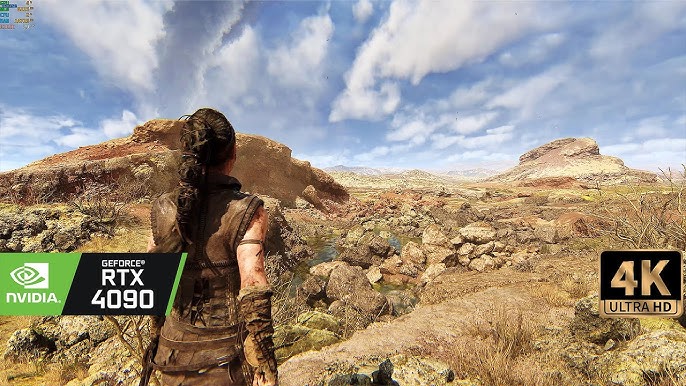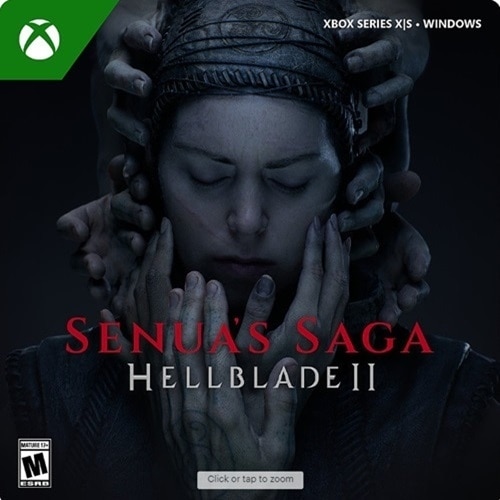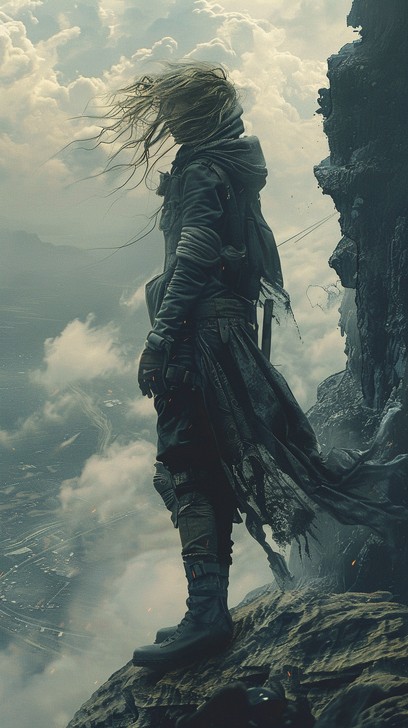Hellblade II's PC Requirements: A Glimpse into the Future, or a Sign of Bloat?

The hype is real. Hellblade II: Senua's Saga, the sequel to Ninja Theory's critically acclaimed psychological action-adventure, is poised to deliver a visually stunning and emotionally resonant experience. But with great visuals come great…system requirements? The recently announced PC specs have certainly sparked a debate within the PC gaming community. As a seasoned veteran of this industry, I've seen firsthand how hardware advancements can push creative boundaries, but also how optimization challenges can hinder even the most anticipated titles. Let’s dive deep into Hellblade II's PC requirements and see if they represent a genuine leap forward or a cause for concern.
Deciphering the Specs: A Closer Look
Let's break down the announced system requirements for Hellblade II PC Requirements:
- Minimum: Not yet explicitly released, Ninja Theory has implied it will still be accessible to a broad range of hardware.
- Recommended: To be announced.
- Storage: 50 GB SSD
The elephant in the room is undoubtedly the 50 GB SSD requirement. While not the largest we've seen (some games are now breaching 100GB), the insistence on an SSD is significant and speaks volumes about the game's underlying technology.
The SSD Mandate: Textures, Audio, and Asset Size
Why an SSD? The answer lies in the relentless pursuit of higher fidelity.
- Texture Quality: Modern games, especially those built on cutting-edge engines like Unreal Engine 5 (UE5), utilize extremely high-resolution textures. These textures, crucial for achieving photorealistic visuals, require rapid loading and streaming to prevent jarring pop-in and stuttering. HDDs simply can't keep up with the data throughput demands.
- Uncompressed Audio: Hellblade: Senua's Sacrifice was renowned for its binaural audio, a key element of its immersive psychological experience. Hellblade II is almost certain to double down on this, potentially using uncompressed or minimally compressed audio assets to maximize fidelity. This comes at a storage cost.
- Overall Asset Size: Beyond textures and audio, the game world itself is likely densely populated with high-poly models, intricate environmental details, and complex visual effects. All these contribute to the overall asset size, demanding faster storage solutions for seamless streaming.
The move towards SSDs, while potentially excluding some players with older hardware, is ultimately a necessary step. The alternative – sacrificing visual fidelity to accommodate slower storage – would be a disservice to the artistic vision of the developers.

CPU and GPU Requirements: Speculation and Context
While the CPU and GPU requirements remain unconfirmed, we can make educated guesses based on the game's target visual fidelity and its UE5 foundation. Hellblade II's System Requirements could potentially include a modern six-core processor (e.g., AMD Ryzen 5 3600 or Intel Core i5-9600K) as a baseline. For GPUs, speculation suggests that something like an RTX 2070 or AMD RX 5700 XT might be the minimum for a playable experience at lower settings. However, to truly experience Hellblade II as intended, especially with ray tracing enabled, a higher-end card, potentially in the RTX 3070 or RX 6700 XT range or above, will likely be necessary. It's important to emphasize that these are expectations.
The crucial question becomes: Is an RTX 3080 or equivalent truly the minimum for experiencing the game as intended? If so, that poses accessibility problems. The cost of entry for next-gen gaming could exclude a large segment of the PC gaming community.
Community Reactions: A Divided Front
The announcement of even the anticipated high system requirements has already ignited passionate discussions across the PC gaming landscape.
- r/pcmasterrace: Threads are filled with both excitement and apprehension. Some users are eager to upgrade their systems to experience Hellblade II at its best, while others express concerns about optimization. One user commented, "I really hope this isn't another Cyberpunk 2077 situation where even high-end cards struggle."
- Overclockers UK: Forum members are dissecting the potential hardware demands, speculating on the impact of UE5's Nanite and Lumen technologies on performance. There's a general consensus that the game will be demanding, but some are cautiously optimistic about potential driver optimizations and DLSS/FSR implementations. One forum thread titled "Hellblade II: Is my 3080 enough?" highlights the uncertainty surrounding performance expectations.
The overall community consensus is mixed. There's excitement about the potential visual fidelity, but also a healthy dose of skepticism about optimization and accessibility. Many are hoping that Ninja Theory will prioritize scalability, allowing players with a wider range of hardware to enjoy the game at reasonable settings.

Pushing the Limits: Innovation or Optimization Issues?
Hellblade II: Senua's Saga has the potential to be a significant technological showcase. UE5, with its Nanite (virtualized micropolygon geometry) and Lumen (global illumination and reflections) technologies, allows developers to create incredibly detailed and dynamic environments. However, these technologies come with a performance cost.
The key question is whether the high system requirements are justified by a genuine leap in visual fidelity, or if they're indicative of optimization issues. Games like Stalker 2 and Manor Lords have also faced scrutiny regarding their PC requirements, highlighting the ongoing challenge of balancing visual ambition with performance optimization. Ninja Theory needs to demonstrate that Hellblade II's hardware demands are a result of pushing the boundaries of what's possible, not simply a consequence of poor optimization.
The high storage requirement, if indeed driven by uncompressed audio and ultra-high-resolution textures, could be justifiable given the game's focus on immersion and visual storytelling. However, it's crucial that these assets are used effectively and contribute meaningfully to the overall experience. No one wants to see a game bloated with unnecessary data just for the sake of hitting a certain visual benchmark.

Setting a New Benchmark? Accessibility Matters
Ultimately, the success of Hellblade II will depend not only on its visual and narrative achievements but also on its accessibility. If the game demands top-of-the-line hardware to run even at medium settings, it risks alienating a significant portion of the PC gaming community.
- The "RTX Tax": The increasing reliance on ray tracing and other advanced visual effects puts a strain on older hardware. Developers need to provide options for players to disable or scale down these features without drastically compromising the overall visual experience.
- Optimization is Key: Even with high-end hardware, poor optimization can lead to stuttering, frame rate drops, and other performance issues. Ninja Theory needs to prioritize optimization throughout the development process to ensure a smooth and enjoyable experience for all players.

Conclusion: A Cautious Optimism
Hellblade II: Senua's Saga is undoubtedly one of the most anticipated PC games. Its ambition to push the boundaries of visual fidelity is commendable, but the high system requirements raise valid concerns about accessibility and optimization. While the SSD requirement seems justified by the game's underlying technology, the CPU and GPU demands need to be carefully balanced to ensure a playable experience for a wider range of players. Hellblade 2 PC Optimization Guide resources will be essential for users on lower-end systems.
Whether Hellblade II sets a new benchmark for PC gaming or simply demands hardware without a corresponding leap in gameplay innovation remains to be seen. One thing is certain: the PC gaming community will be watching closely, eager to see if Ninja Theory can deliver on its promise of a visually stunning and emotionally resonant experience that's also reasonably accessible. It’s a complex equation, and one I hope they solve elegantly.




